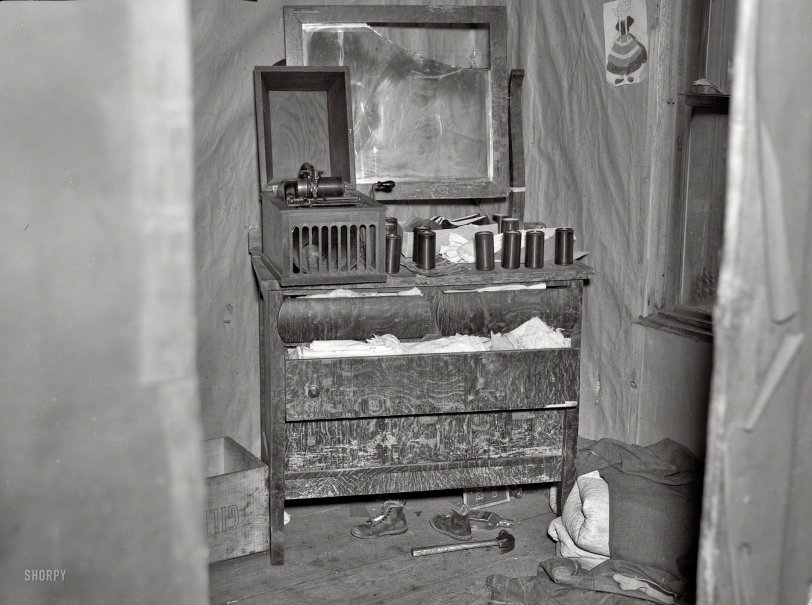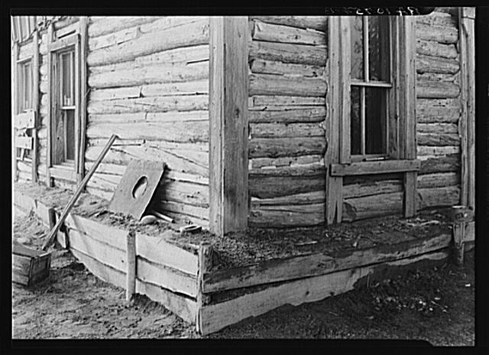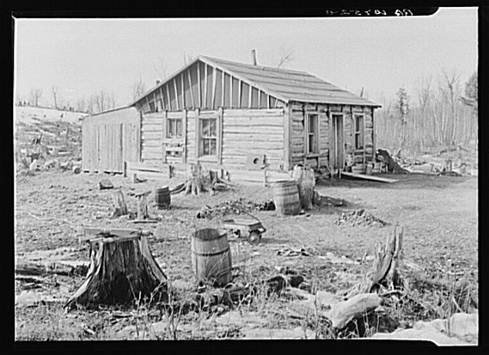


Framed or unframed, desk size to sofa size, printed by us in Arizona and Alabama since 2007. Explore now.
Shorpy is funded by you. Patreon contributors get an ad-free experience.
Learn more.

- Lost in Toyland
- And without gloves
- If I were a blindfolded time traveler
- Smoke Consumer Also Cooks
- Oh that stove!
- Possibly still there?
- What?!?
- $100 Reward
- Freeze Frame
- Texas Flyer wanted
- Just a Year Too Soon
- WWII -- Replacing men with women at the railroad crossing.
- Yes, Icing
- You kids drive me nuts!
- NOT An Easy Job
- I wonder
- Just add window boxes
- Icing Platform?
- Indiana Harbor Belt abides
- Freezing haze
- Corrections (for those who care)
- C&NW at Nelson
- Fallen Flags
- A dangerous job made worse
- Water Stop
- Passenger trains have right of way over freights?
- Coal
- Never ceases to amaze me.
- Still chuggin' (in model form)
- Great shot
Print Emporium
Cranked: 1937

April 1937. "Bureau in the bedroom of the house occupied by the Ingrahams and the Smallwoods near Nelma, Wisconsin." A cryptic tableau if there ever was one. Medium-format nitrate negative by Russell Lee. View full size.
Ola!
Victor claimed they chose the suffix -ola for their new internal horn machine because it had "a sound suggestive of music". Suggestive of music, perhaps, in that it was quite suggestive of another company's product: Aeolian's brand of player piano, the Pianola. Swiping other people's suffixes isn't without its poetic justice, and soon other phonograph companies began coming out with their own "olas" (actually the "o" was part of the word "piano"). Eventually an auto parts company, which had never manufactured pianos or phonographs, would appropriate it as a name for their new car radio, a name that's still around today.
Edison Amberola 30
Agree with Michael that the machine is an Edison Amberola 30. The "-ola" suffix referred to an internal horn machine [Victor = Victrola, Columbia = Grafonola, etc.], and the cylinders made for use on the Edison machines were known as "Blue Amberols".
Regarding sstucky's comment, Edison did make cylinders until the fall of 1929, by which point they were recorded using the electrical, rather than acoustical, recording process. Although cylinders had long since fallen out of favor with the record-buying public at large, Edison continued to produce them on the basis of many rural folks still having the older machines--this photo is a good indication of that marketing strategy.
From a Victrola collector
The mechanism looks like an Edison Amberola 30, but that cabinet is spartan. I'm not sure what the model number is without the ornate oak cabinet.
Old Audio
Edison actually made cylinders until 1929.
Why?
My question is, why is there even a photo of this scene? It may be interesting to look at 75 years later but I doubt in 1937 it was that impressive.
[It is one of the many thousands of pictures taken by Russell Lee and his colleagues documenting housing conditions for the Farm Security and Resettlement Administrations. - Dave]
Wallpaper
As an illustration for the utility of wallpaper as described by MaxCohoon, I have attached two photographs from the same series that show the house from the outside. It is constructed of logs. The caption for the detail photograph reads in part: "Note the earth fill around base to keep in warmth in the winter. The space between the logs is usually filled with cement or mud. The windows are removed when a house is abandoned; people cannot build glass."


This is so wrong to say
Judging by those empties and what else is scattered on that floor, I'd say someone got hammered last night. Well, I did say it was so wrong to say.
Copyright Infringement
I'd say this is a crime scene photo -- of a cylinder bootlegging operation!
Functionality of wallpaper
In response to LilyPondLane's submittal: In our modern times, wallpaper is merely a form of wall decoration. Formerly, wallpaper had a utilitarian function to seal the interior space of the house, and prevent drafts. Many houses did not use sheetrock or plaster on the walls, and cold air could seep in past the wood siding and planking.
Unless I'm Mistaken
This tableau is one of the sets for Edison's lost 1909 version of The Shining.
Old-school audio
In strictly temporal terms, playing a cylinder in 1937 would be like today sticking one of those round, silvery things - what are they called again? Oh yeah, CDs - into a machine rather than downloading or streaming an mp3 to your mobile device.
Way "Up North"
As a native Wisconsinite, I can honestly say that I have never heard of Nelma, WI, which appears to be a speck on the map.
Nelma is about as far "up north" (a term used by natives to refer to the northern lakes and forest areas of the state where many have summer homes/cabins and where the deer hunting culture is king) as a Wisconsin town can be. And, it should be pointed out, that the Ingrahams's and Smallwood's home is only "near" Nelma, which makes it even further removed from civilization. The paper on the bedroom walls gives new meaning to the term "wall paper". (Let's hope that there is some insulation under it somewhere as the subzero temperatures in this neck of the woods can be extreme.) The artwork on the wall appears to be Dutch, but is not Vermeer. The bottles under the dresser could have contained liquor or liniment, both of which would have been necessary to survive life in Nelma. I don't want to think about the possibilities of why the hammer was lying side-by-side with a pair of boy's shoes. In addition, one can only hope that the two families were able to survive the seven years' bad luck that may have come as a result of the breaking of the mirror. As Dave stated, this indeed is a cryptic tableau.
























On Shorpy:
Today’s Top 5